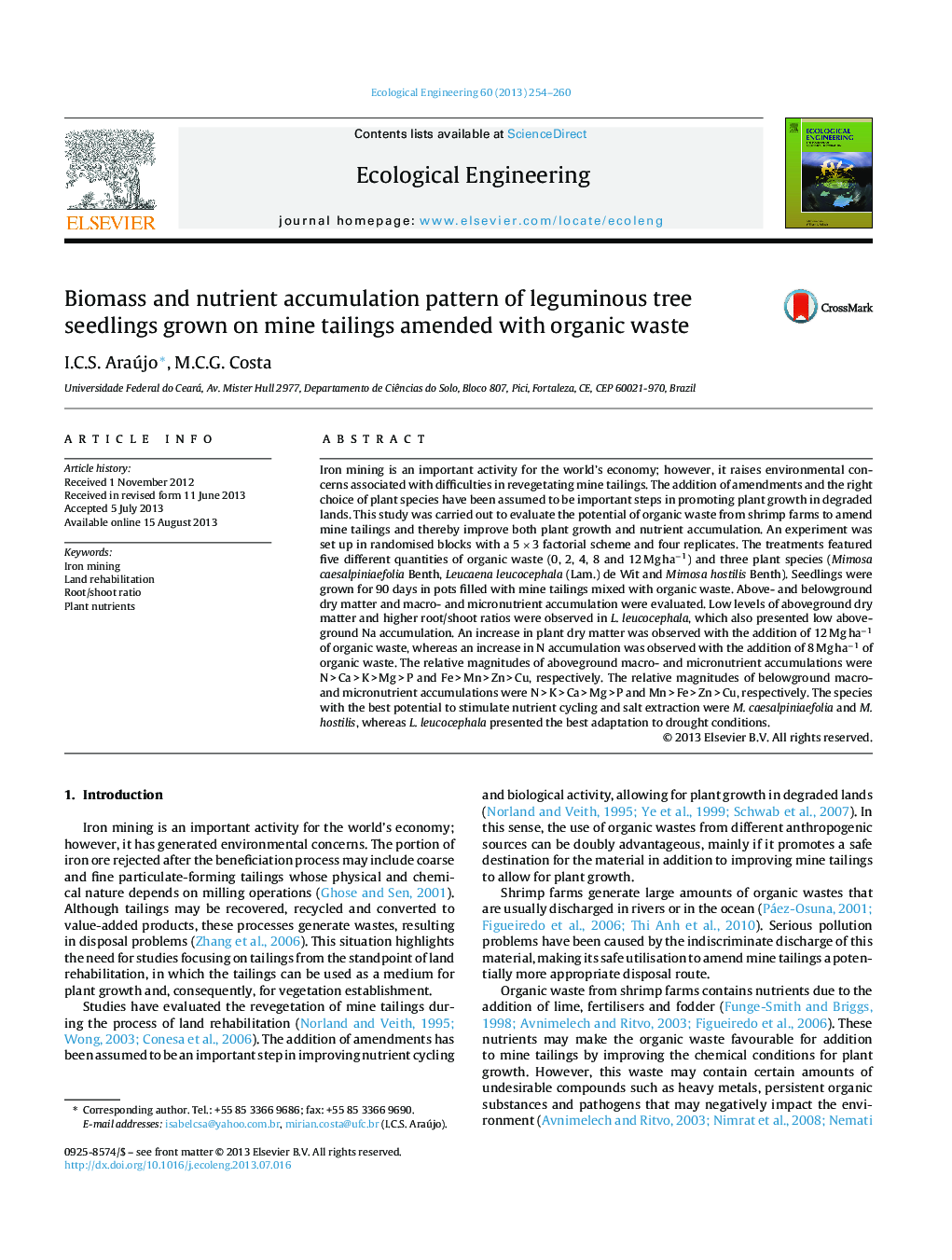| کد مقاله | کد نشریه | سال انتشار | مقاله انگلیسی | نسخه تمام متن |
|---|---|---|---|---|
| 6302406 | 1618038 | 2013 | 7 صفحه PDF | دانلود رایگان |
Iron mining is an important activity for the world's economy; however, it raises environmental concerns associated with difficulties in revegetating mine tailings. The addition of amendments and the right choice of plant species have been assumed to be important steps in promoting plant growth in degraded lands. This study was carried out to evaluate the potential of organic waste from shrimp farms to amend mine tailings and thereby improve both plant growth and nutrient accumulation. An experiment was set up in randomised blocks with a 5 Ã 3 factorial scheme and four replicates. The treatments featured five different quantities of organic waste (0, 2, 4, 8 and 12 Mg haâ1) and three plant species (Mimosa caesalpiniaefolia Benth, Leucaena leucocephala (Lam.) de Wit and Mimosa hostilis Benth). Seedlings were grown for 90 days in pots filled with mine tailings mixed with organic waste. Above- and belowground dry matter and macro- and micronutrient accumulation were evaluated. Low levels of aboveground dry matter and higher root/shoot ratios were observed in L. leucocephala, which also presented low aboveground Na accumulation. An increase in plant dry matter was observed with the addition of 12 Mg haâ1 of organic waste, whereas an increase in N accumulation was observed with the addition of 8 Mg haâ1 of organic waste. The relative magnitudes of aboveground macro- and micronutrient accumulations were N > Ca > K > Mg > P and Fe > Mn > Zn > Cu, respectively. The relative magnitudes of belowground macro- and micronutrient accumulations were N > K > Ca > Mg > P and Mn > Fe > Zn > Cu, respectively. The species with the best potential to stimulate nutrient cycling and salt extraction were M. caesalpiniaefolia and M. hostilis, whereas L. leucocephala presented the best adaptation to drought conditions.
Journal: Ecological Engineering - Volume 60, November 2013, Pages 254-260
